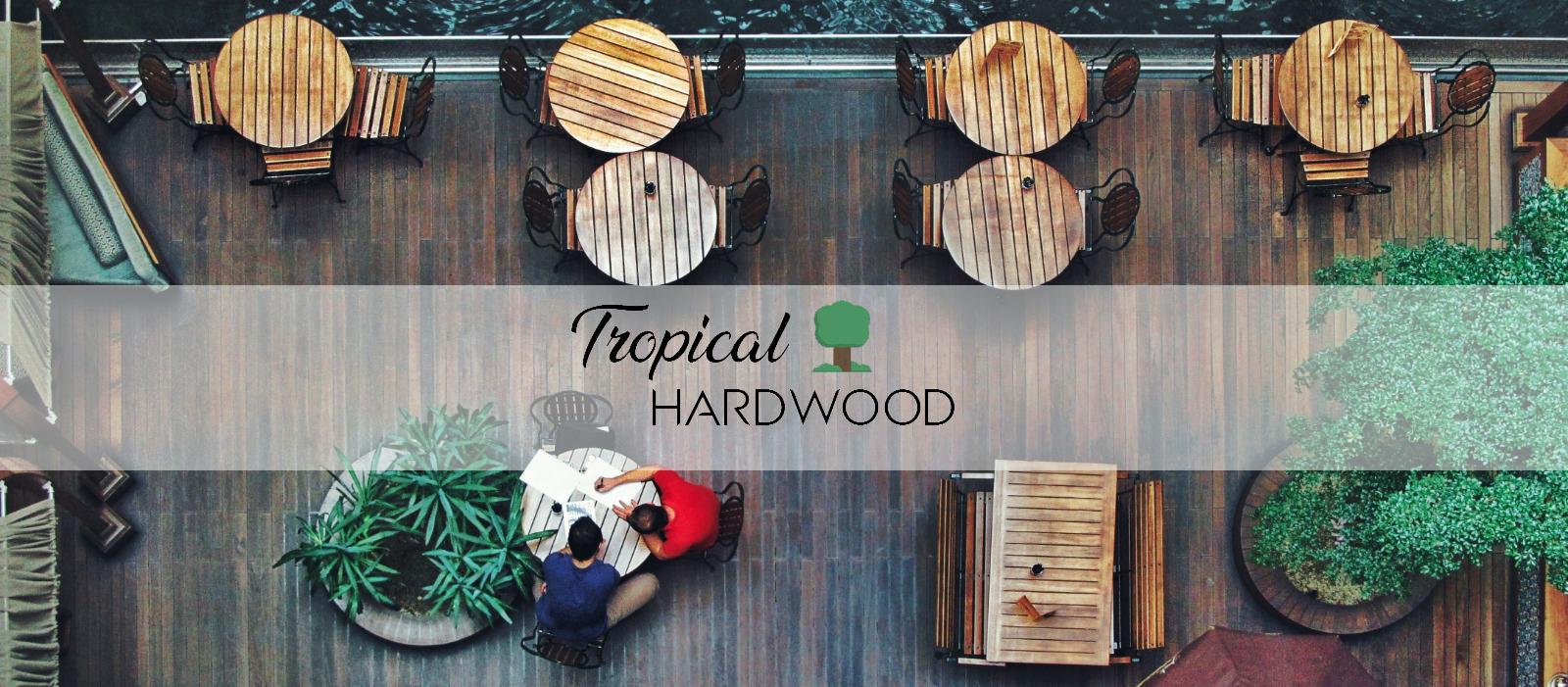Wooderra Teak
In this article we invite you to discover Wooderra Teak. We have also gathered facts and information about teak and plantation management for all teak fans. If you like the article or you want to learn more about the topic, you are also invited to visit our tropical timber blog or contact us for further questions.
Of all the tropical hardwood species, and perhaps among all tree species, teak arouses a special fascination for all wood lovers, much like gold among the precious metals. For more than 2,000 years, teak has been valued as an durable timber in Asia, and is now it is demanded worldwide. Rustic terrace and pool furniture made of teak adhere to a very special touch of luxury of bygone days.
Its extremely high dimensional stability and unique aesthetic qualities make Teak interesting for a wide range of applications. From the yacht deck to the garden chair, teak is a real all-rounder among the woods. The wood is well protected by its own resins against mold and parasite infestation. Teak wood products that are exposed to strong weather have a significantly longer lifespan compared to other types of wood. This makes teak perfect for areas that require a strong, durable and resistant hardwood.
Decking, door and window frames, as well as teak garden furniture give every home a luxurious glamor. Teak is not only sturdy, but also relatively easy to care for. Below, we have briefly summarized the most important facts about teak care. In our blog you can read further care tips and testimonials for the care of your teak products.
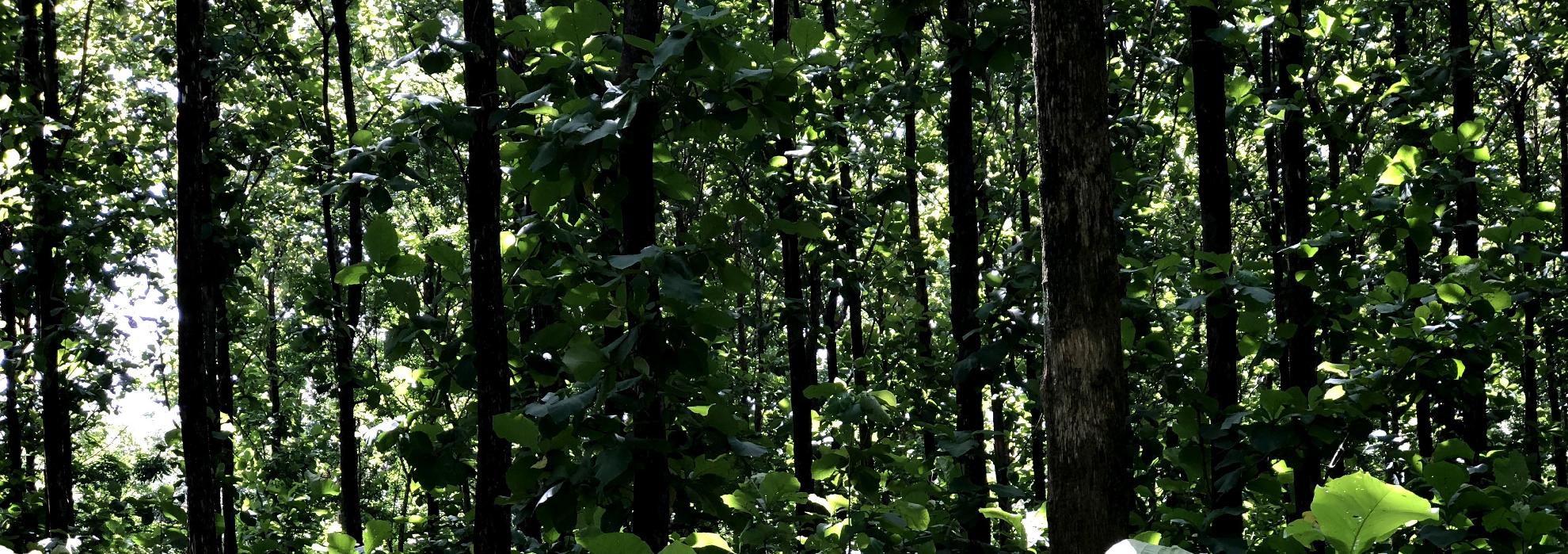
Wooderra – uncompromisingly sustainable
The demand for tropical wood has changed over the years. Today buyers pay more attention to whether a product is environmentally friendly or not. In cases buyers doubt, many buyers prefer to select products not made of tropical wood or teak. With Wooderra you no longer have to live without teak and that without any guilty conscience. By purchasing Wooderra products you support sustainable forestry, fair pay and long-term employment of workers in Panama.
Wooderra teak comes exclusively from sustainable managed plantations in Panama. The company Panama Teak Forestry, is specialized in sustainable teak plantation management. As co-founder of Wooderra, Panama Teak Forestry ensures a sustainable supply by operating so-called agroforestry developments. What makes the concept so special and why other plantations just pretend to be sustainable, you will discover later in a separate chapter. Only one thing in advance: The company has committed itself to steadily developing its concept in order to be able to ensure a long-term supply of sustainably produced teak.
Of course Wooderra Teak is also FSC certified. However, the benchmark that Wooderra sets for sustainability is much stricter. For Wooderra products, everything comes from one source, that means we and also you know exactly where our wood comes from. Panama Teak Forestry also owns its own modern sawmill in Panama, in close proximity to the plantations. The production facilities are equipped with state-of-the-art machinery and two drying chambers. The mill is able to produce a variety of other products in addition to the Wooderra product catalog. On an area of more than 50,000 m², Wooderra products are produced cost-efficiently in the highest quality and with modern processing methods.
The plantations at different ages and growth stages provide a steady supply of teak that it can be produced year-round and create sustainable jobs in the rural area. The logging there is similar to the management of our domestic forests, because it is never completely clear-cut.
Since its founding, Wooderra has committed to conserve natural resources through sustainable agroforestry and reservoir wood. The land of the plantations is not "exploited" but managed in a way that it can be used in the future as well.
Gereral quality differences of Teak wood
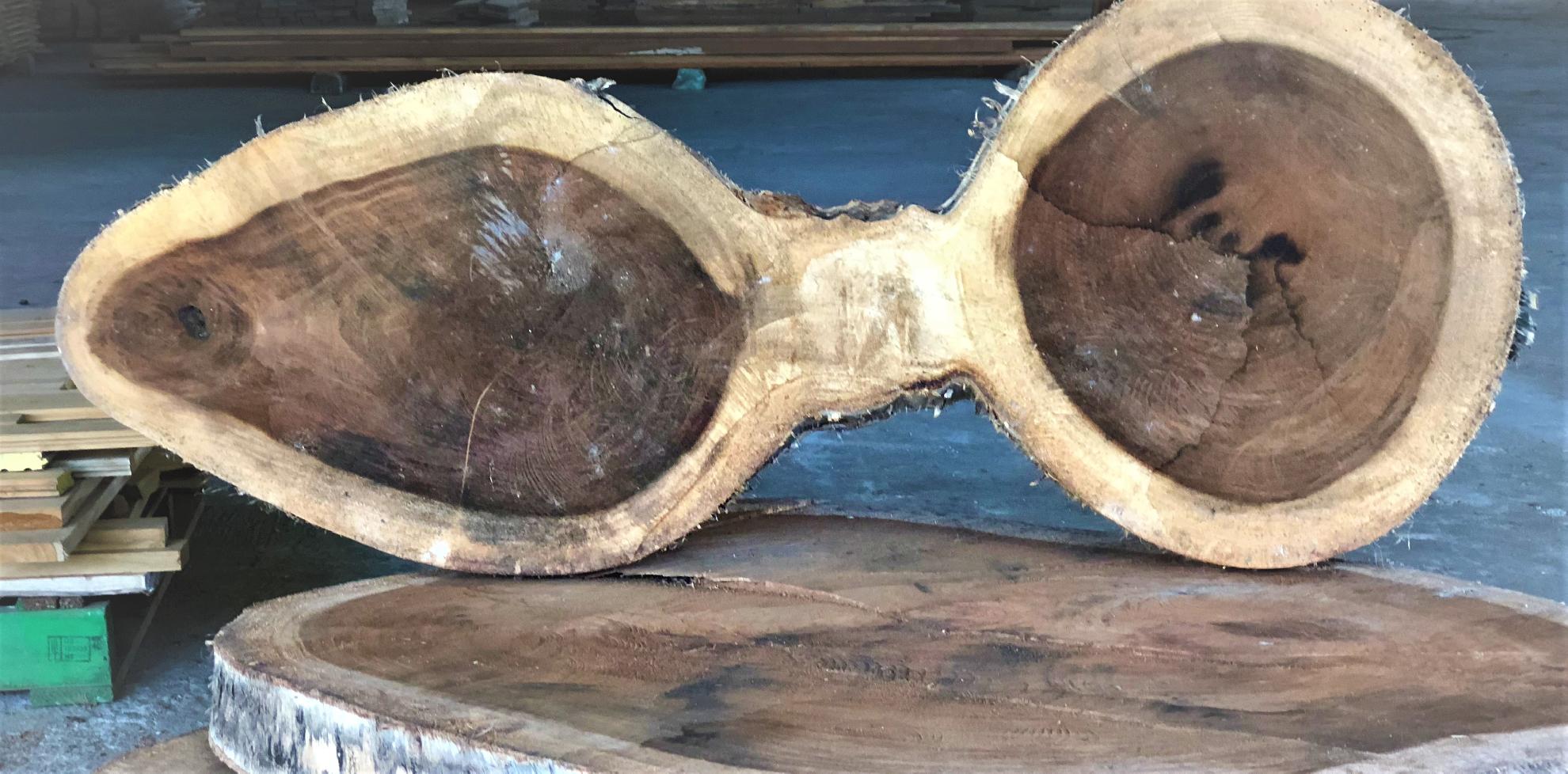
The great thing about all teak products is that paintings or other wood preservation treatments are not mandatory. During its growth, the teak tree produces its own paraffins and resins that protect the wood against pests. This natural impregnation makes the wood insensitive to parasites and molds. In addition, the wood-based substances also inhibit flammability. The heartwood of the teak tree contains a higher concentration of these resins. At the same time it also makes it look darker than the sapwood. That's why heartwood is also considered to be much more valuable.
If you are thinking of buying a teak product, you may have noticed that it is often advertised with a low sapwood content. In the division into different quality grades, the sapwood content is the most important criterion for the industry in addition to the course of the grain. However, one point is often not taken into account when purchasing teak. Teak forms a gray patina over time. That is why it is appreciated by many experts. During the graying process, however, the contrast between core and sapwood disappears more and more. It is often suggested that the sapwood has a much lower quality. However, teak sapwood is still more resistant than many domestic substitutes. For those who do not mind the gray patina, the proportion of sapwood should not really be decisive.
Wooderra products are therefore always delivered unsorted by default. In order to fulfill all preferences, the Wooderra products are available on request in different sorts, so that there is something for everyone. If you want a sorting please let us know in your request. We will then make you the right offer, taking into account your wishes.
How to treat your Teak product in the right way
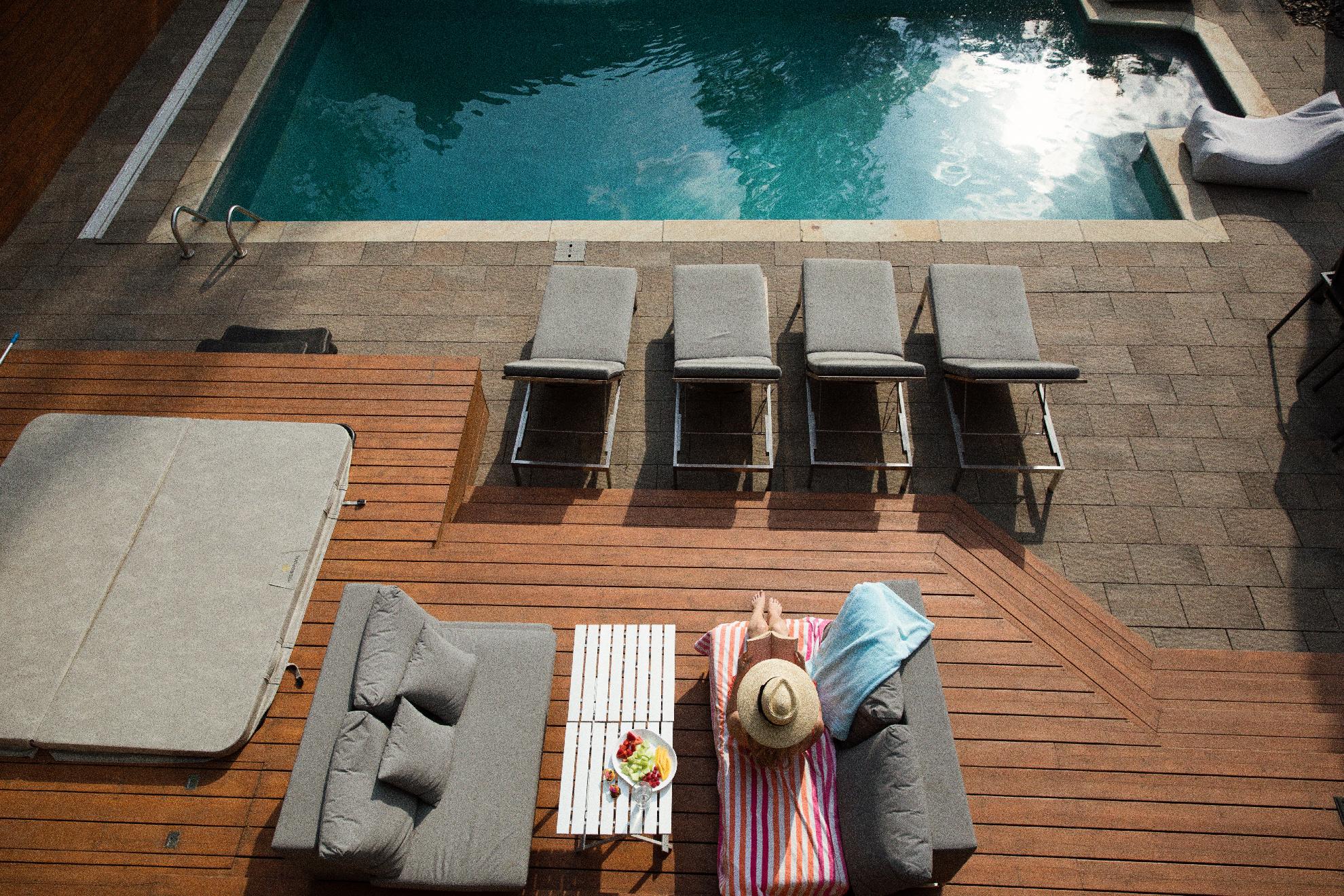
As mentioned above, teak is relatively easy to care for. When it comes to the question of which treatment is best, it depends more on the individual preferences, as on the extension of life. Many connoisseurs appreciate the gray patina that develops the teak wood over time and that is exactly why these people choose garden furniture and decking made of teak. In the previous chapter, we explained why in this case the amount of sapwood is no longer that crucial. The difference in life is very small under normal conditions.
But tastes are known to be different. Some people prefer teak, whose dark brown color is still fully appreciated. In this case, a treatment with special teak oil is always recommended, as it can slow down the graying process. There are a variety of different teak oils available on the market that can achieve this effect. The grain looks stronger after such a treatment, but the wood darkens somewhat due to the oil.
In order to maintain the effect, treatment with oil should also be done once or twice a year, preferably in spring and autumn, when temperatures are more moderate, this also makes working easier than in the blazing summer heat. Some of these products also heat themselves when processed by chemical reactions. Therefore, the appropriate safety instructions of the product should always be considered in order to avoid accidents. In any case, attention should be paid as well to appropriate work clothing.
The Agroforestry concept
.png)
Again and again, artificial plantations are being touted as a substitute for the rainforest. With these arguments many providers try to take away their bad conscience from their customers. Environmental initiatives rightly criticize, as the complex ecosystem has never been restored. In Panama, there is a pilot project that takes a different approach. Panama Teak Forestry uses former farming land for its plantations. The aim of the concept was to return unprofitable land to a meaningful use and to produce a soil quality that remains usable. The teak plant is a rather robust and less picky species. Teak thrives well on the former pastures.
The concept was already developed in the experimental phase of the project "sustainable plantations in Panama." During the first planting, the forest engineers noticed that the ground vegetation grew more abundantly, as the sunrays do not penetrate the ground so intensively. Through the large leaves of the young teak trees less sunrays arrive at the ground and dry it out less quickly.
A teak tree needs about 25-30 years under perfect conditions until it can be logged and the heartwood has developed nicely. In conventional plantations, the plantation area is not otherwise usable for this time. Therefore, considering this concept, it was obvious to use the area for livestock farming at the same time. The first years Teak grows very fast until it reaches its final height. From then on, a livestock industry within the plantation, can not harm the plant. The agro concept is a pilot project in Panama aimed at ensuring sustainable land use. For Wooderra Teak, land use should not be at the expense of the local population.
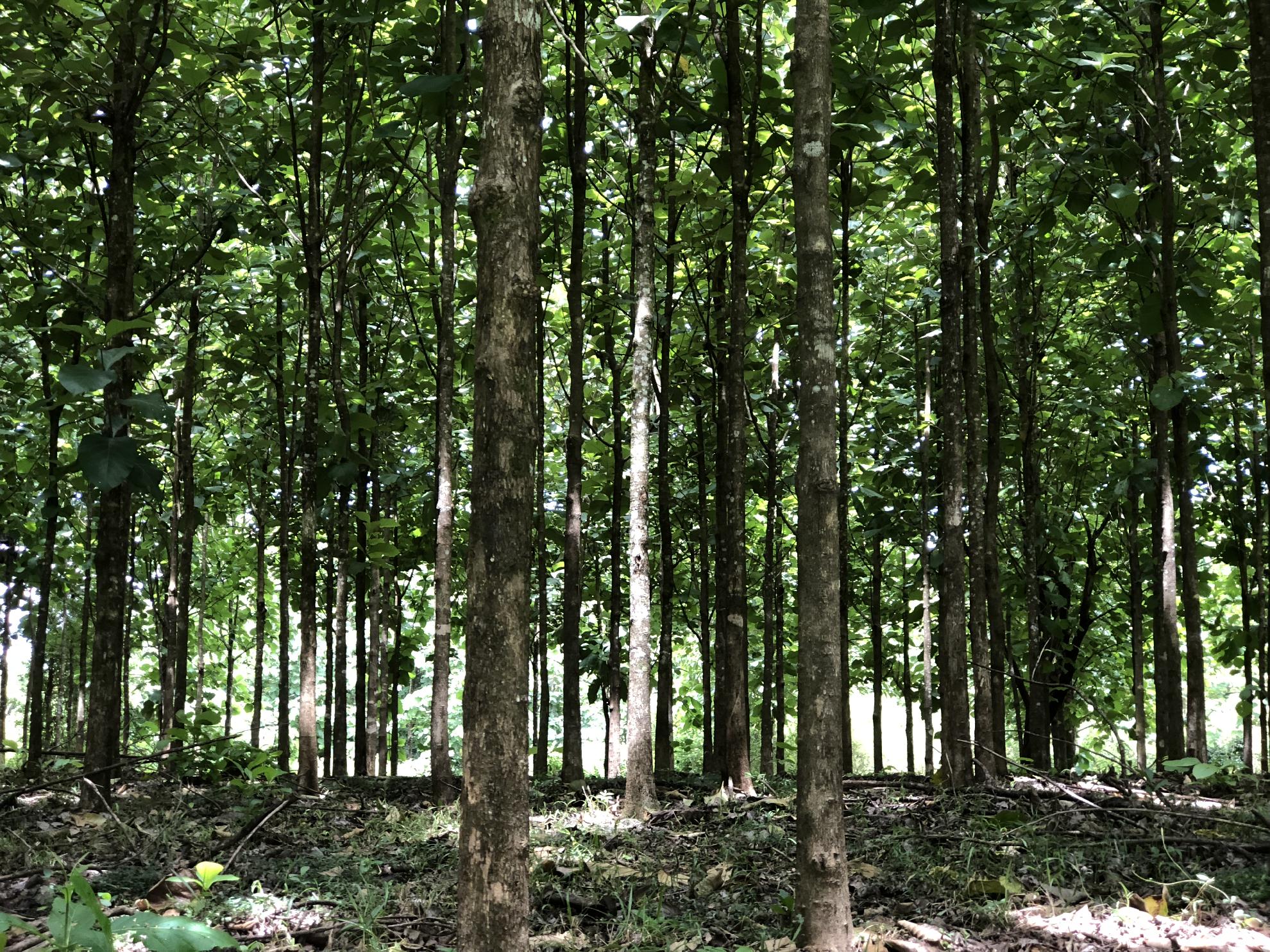
The plantation provides shade to the grazing animals and the growing ground vegetation sufficient food. For cows and other grazing animals, a life in the shady plantation is much more pleasant than in the blazing tropical sun. The livestock owners, whose animals live within the plantation, have reported on healthier animals and an increased reproductive rate. As the teak grows, the surrounding undergrowth is just cut off enough for the trees to stay healthy and the cows to find sufficient food. In contrast to a complete removal, this also prevents soil erosion and increases the biodiversity of the plantation. The animals naturally fertilize the soil and promote the growth of the vegetation. Of course, care is taken not to provoke overuse with too many animals.
Along the natural streams that run through the plantations, the natural habitat is also preserved. There grows a mixture of local trees and vegetation, which of course remains untouched.
The key to success in agro-forestry, as with many things in life, is a good planning and proportionate management. Animals usually do not harm a soil; However, excessive livestock farming does. Teakwood and forestry do not harm the soil either; exploitative forestry, however, does so. With the agroforestry concept, Panama Teak Forestry has developed a system that ensures the long-term sustainable and careful use of the land. The plantation team is proud of the detailed micromanagement, as careful attention to details is the key to the healthy growth of trees and livestock.
Wooderra has committed to using the unique resources in Panama with the utmost care to protect nature. For Wooderra, true sustainability is a key to lasting success.
How works sutainable forestry in detail?
After the first planting of the trees, the plantation is thinned out gradually and replanted. This protects the soil and provides better conditions for the remaining trees. In addition, to have teak trees that are fully grown for constant production, there is not "the" plantation, but many small sections with trees of the same age.
The trees are thinned out for the first time after 3 to 4 years. Thereafter, the area is also released as pasture. After 7 or 8 years, the second time is thinned, leaving 600 to 800 trees per hectare. The third thinning takes place in the 12th year on 400 to 500 trees per hectare. The optional thinning in the 15th year to 350 to 400 trees per hectare, depends on the previous development of the plantation and can be skipped. In the 18th year, however, the trees are thinned to 220 to 260 trees per hectare.
When the healthy teak trees are 25 years old and have reached commercial size, the forest managers decide whether to harvest the entire plantation section or halt a stock of about 150 trees per hectare. After 25 years, each tree contains about 1 cubic meter of heartwood. This corresponds to 200 to 260 cubic meters of heartwood per hectare, depending on the number of trees.
If the forest managers decide to continue to grow part of the stock, the percentage of heartwood will continue to increase steadily each year. In general, a constant growth of teak trees is possible up to 60 years without any problems. The growth is continuously monitored in test plots to determine the optimal time for thinning and harvesting. Active management of a plantation leaves no dead soil.
About the history of Teak
Originally, the teak tree comes from the tropical forests of Asia and is native to countries such as Indonesia. Whole rainforest areas are clear-cut to harvest the wood there. Even with selective logging, aisles must be cut into the rainforest to transport the equipment and the logged timber. For this reason, plantations are many times more sustainable than teak from the tropical rainforest, even if teak from plantations has not grown that long.
Teak cultivation has been the subject of research programs in India, Indonesia, Thailand and Myanmar since 1960. Best practice techniques for producing high quality teak are well documented. Since teak is relatively easy to cultivate and has excellent growth rates, it is ideally suited as a plantation wood species in areas with appropriate ecological conditions.
In plantation cultures there are created artificially optimal growth conditions. The trees find there more favorable conditions for rapid growth than in the competitive surrounding of a rainforest. Often teak from plantations bad is called low quality teak, because it has not grown so long. However, the framework conditions on a well-managed plantation can produce high-quality teak after just 30 years.
We hope that with this article we have been able to give you a good insight into the work of Wooderra.
If you want to learn more about teak, feel free to visit our tropical wood blog or contact us here. We are looking forward to your suggestions and will be happy to answer any further related questions.
